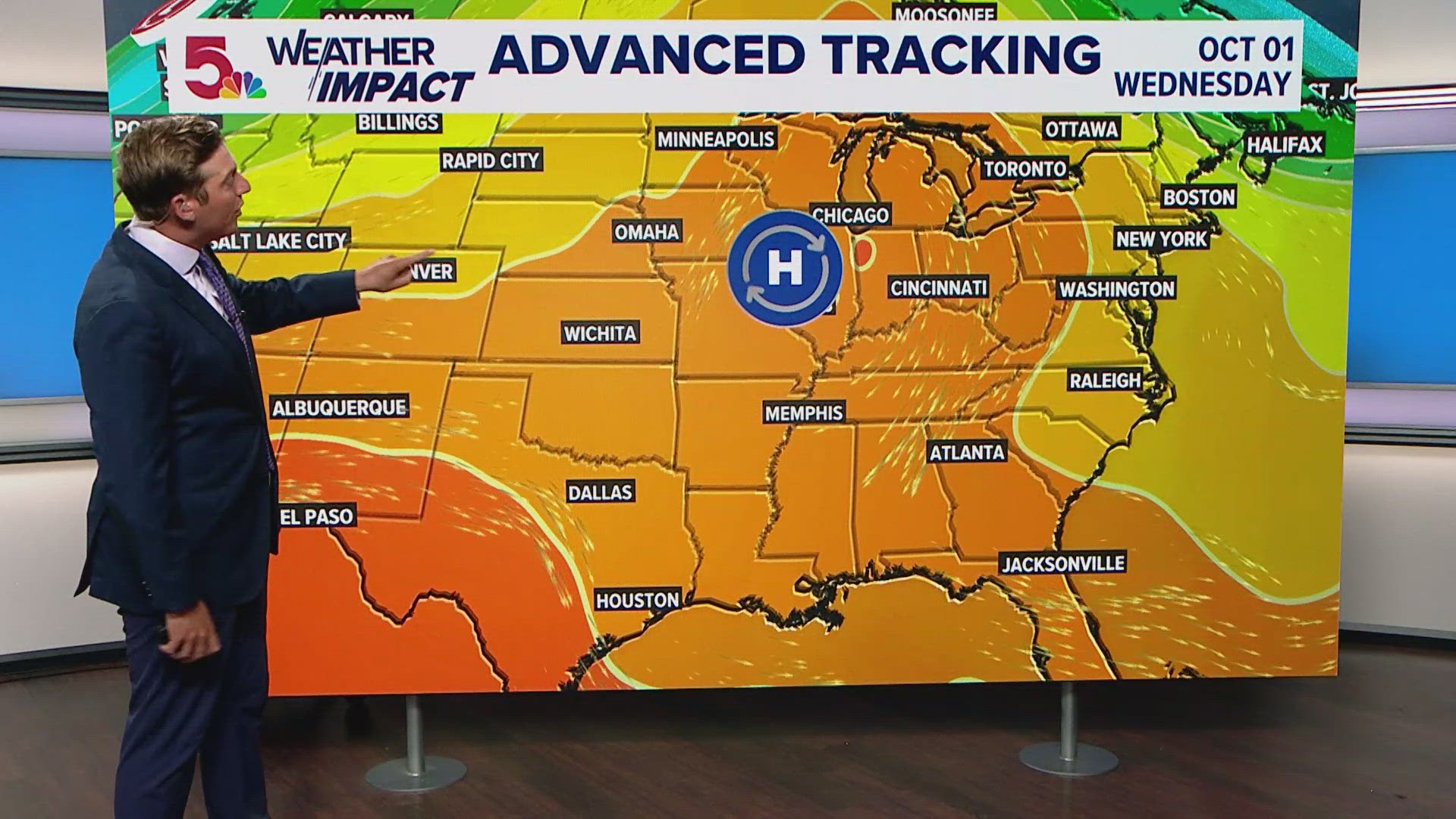Report on Pre-Construction Environmental Survey and Sustainable Development in Greenville
Project Overview and Regulatory Mandate
An environmental survey was conducted in the Tar River in Greenville, N.C., as a mandatory prerequisite for a major infrastructure project. This action aligns with key principles of sustainable development and environmental stewardship.
- Project: A $20-million initiative to replace 1,600 feet of steel bulkhead separating the town common from the Tar River.
- Regulatory Body: The survey is a requirement mandated by the U.S. Fish & Wildlife Service.
- Timeline: The survey precedes construction scheduled to begin in August.
- Objective: To identify and protect vulnerable aquatic species before construction activities commence, ensuring infrastructure development does not degrade the local ecosystem.
Biodiversity Conservation Efforts and Findings
The survey focused on the protection of local fauna, with particular emphasis on critically endangered species endemic to the region. This work is a direct contribution to biodiversity conservation.
- Mussel Relocation: Common mussels within the construction zone were carefully moved to safer habitats.
- Endangered Species Search: A targeted search was conducted for two critically endangered species:
- Tar River spinymussel: A freshwater mussel found exclusively in the Tar and Neuse River basins.
- Neuse River waterdog: A rare aquatic salamander also endemic to the same river basins.
Alignment with Sustainable Development Goals (SDGs)
This initiative directly supports several United Nations Sustainable Development Goals (SDGs), integrating environmental protection with urban infrastructure development.
-
SDG 14: Life Below Water
The project actively works to conserve and protect a freshwater ecosystem. By surveying and relocating mussel species, the city is taking direct action to mitigate the impacts of development on aquatic life, in line with Target 14.2 to protect marine and coastal ecosystems.
-
SDG 15: Life on Land
The focus on protecting the critically endangered Tar River spinymussel and Neuse River waterdog is a crucial action to halt biodiversity loss (Target 15.5). Safeguarding these species, which are unique to this habitat, protects the planet’s terrestrial and freshwater ecosystems.
-
SDG 11: Sustainable Cities and Communities
The City of Greenville is strengthening efforts to protect the area’s natural heritage (Target 11.4) by making environmental protection a mandatory component of urban infrastructure renewal. This ensures the city develops in a more sustainable and resilient manner.
-
SDG 9: Industry, Innovation, and Infrastructure
The requirement for an environmental survey prior to a major construction project demonstrates a commitment to building resilient and sustainable infrastructure. This approach integrates ecological safeguards into economic development, ensuring long-term viability.
1. Which SDGs are addressed or connected to the issues highlighted in the article?
The article discusses issues that are directly and indirectly connected to several Sustainable Development Goals. The primary focus on protecting endangered aquatic species and their habitat during an infrastructure project links to goals concerning life below water, life on land, sustainable cities, and infrastructure.
-
SDG 14: Life Below Water
This goal is relevant because the article focuses on protecting species that live in a freshwater ecosystem. The Tar River spinymussel and the Neuse River waterdog are aquatic species, and the survey is conducted “in the waters of the Tar River.” The goal aims to conserve and sustainably use oceans, seas, and marine resources, which extends to the connected freshwater systems that support unique biodiversity.
-
SDG 15: Life on Land
This goal is addressed through its focus on protecting biodiversity and halting its loss. The article explicitly mentions the effort to find and protect “critically endangered species” like the Tar River spinymussel and the Neuse River waterdog. The survey is a direct action to protect terrestrial and freshwater ecosystems and the threatened species within them from the impacts of human activity (construction).
-
SDG 11: Sustainable Cities and Communities
The project is initiated by the “City of Greenville” and involves the “town common,” a public park space. The replacement of the bulkhead is an urban development project. By conducting an environmental survey as a prerequisite for construction, the city is integrating principles of environmental sustainability into its urban planning and development, aiming to make the community more resilient and sustainable while protecting its natural heritage.
-
SDG 9: Industry, Innovation and Infrastructure
The article describes a “$20-million project” to “replace 1,600 feet of steel bulkhead.” This is an infrastructure project. The fact that it is subject to an environmental impact survey required by the U.S. Fish & Wildlife Service indicates a move towards developing sustainable and resilient infrastructure that minimizes negative environmental impacts.
2. What specific targets under those SDGs can be identified based on the article’s content?
Based on the activities described in the article, several specific SDG targets can be identified:
-
Target 15.5: Take urgent and significant action to reduce the degradation of natural habitats, halt the loss of biodiversity and, by 2020, protect and prevent the extinction of threatened species.
This is the most directly relevant target. The article’s core subject is the survey conducted to find and protect the “Tar River spinymussel and Neuse River waterdog,” which are described as “critically endangered species.” This action is a direct measure to “protect and prevent the extinction of threatened species” ahead of the construction project.
-
Target 14.2: By 2020, sustainably manage and protect marine and coastal ecosystems to avoid significant adverse impacts…
While this target specifically mentions marine and coastal ecosystems, its principle applies to the connected freshwater ecosystem of the Tar River. The survey is a clear effort to “protect” the river’s ecosystem from the “significant adverse impacts” of the bulkhead construction, thereby contributing to its sustainable management.
-
Target 11.4: Strengthen efforts to protect and safeguard the world’s cultural and natural heritage.
The unique biodiversity of the Tar and Neuse River basins, including the two critically endangered species found “nowhere else,” constitutes a significant part of the region’s natural heritage. The mandatory survey is an effort by the City of Greenville to “safeguard” this natural heritage from potential harm during urban development.
-
Target 9.1: Develop quality, reliable, sustainable and resilient infrastructure…
The bulkhead replacement project is an investment in public infrastructure. By incorporating an environmental protection survey as a “requirement… ahead of any construction,” the project aligns with the goal of developing “sustainable” infrastructure that accounts for and mitigates its environmental footprint.
3. Are there any indicators mentioned or implied in the article that can be used to measure progress towards the identified targets?
The article does not cite official SDG indicators, but it provides specific information that can serve as qualitative and quantitative indicators for measuring progress.
-
Indicator for Target 15.5: Red List Index and actions to protect species.
The article provides a direct indicator by identifying the conservation status of key species. It states that the Tar River spinymussel and Neuse River waterdog are “critically endangered species.” The survey itself, described as a hunt for these species and the relocation of common mussels, is a measurable action taken to protect biodiversity. Progress can be measured by the successful implementation of such protective measures in all development projects.
-
Indicator for Target 11.4: Expenditure on the preservation of natural heritage.
While the cost of the survey itself is not mentioned, the article states the overall project cost is “$20-million.” The integration of environmental protection costs within this budget can be seen as an indicator of expenditure on preserving natural heritage within an urban development context. The existence of the “requirement by the U.S. Fish & Wildlife Service” is a policy-based indicator of efforts to protect natural heritage.
-
Indicator for Target 9.1: Investment in sustainable infrastructure.
The article provides a quantitative figure: the “$20-million project to replace 1,600 feet of steel bulkhead.” This figure represents an investment in infrastructure. The fact that this investment is conditional on an environmental survey makes it a partial measure of investment in *sustainable* infrastructure.
4. SDGs, Targets and Indicators Analysis
| SDGs | Targets | Indicators (Identified or Implied in the Article) |
|---|---|---|
| SDG 15: Life on Land | 15.5: Protect and prevent the extinction of threatened species. |
|
| SDG 14: Life Below Water | 14.2: Sustainably manage and protect aquatic ecosystems. |
|
| SDG 11: Sustainable Cities and Communities | 11.4: Strengthen efforts to protect and safeguard the world’s natural heritage. |
|
| SDG 9: Industry, Innovation and Infrastructure | 9.1: Develop quality, reliable, sustainable and resilient infrastructure. |
|
Source: witn.com







